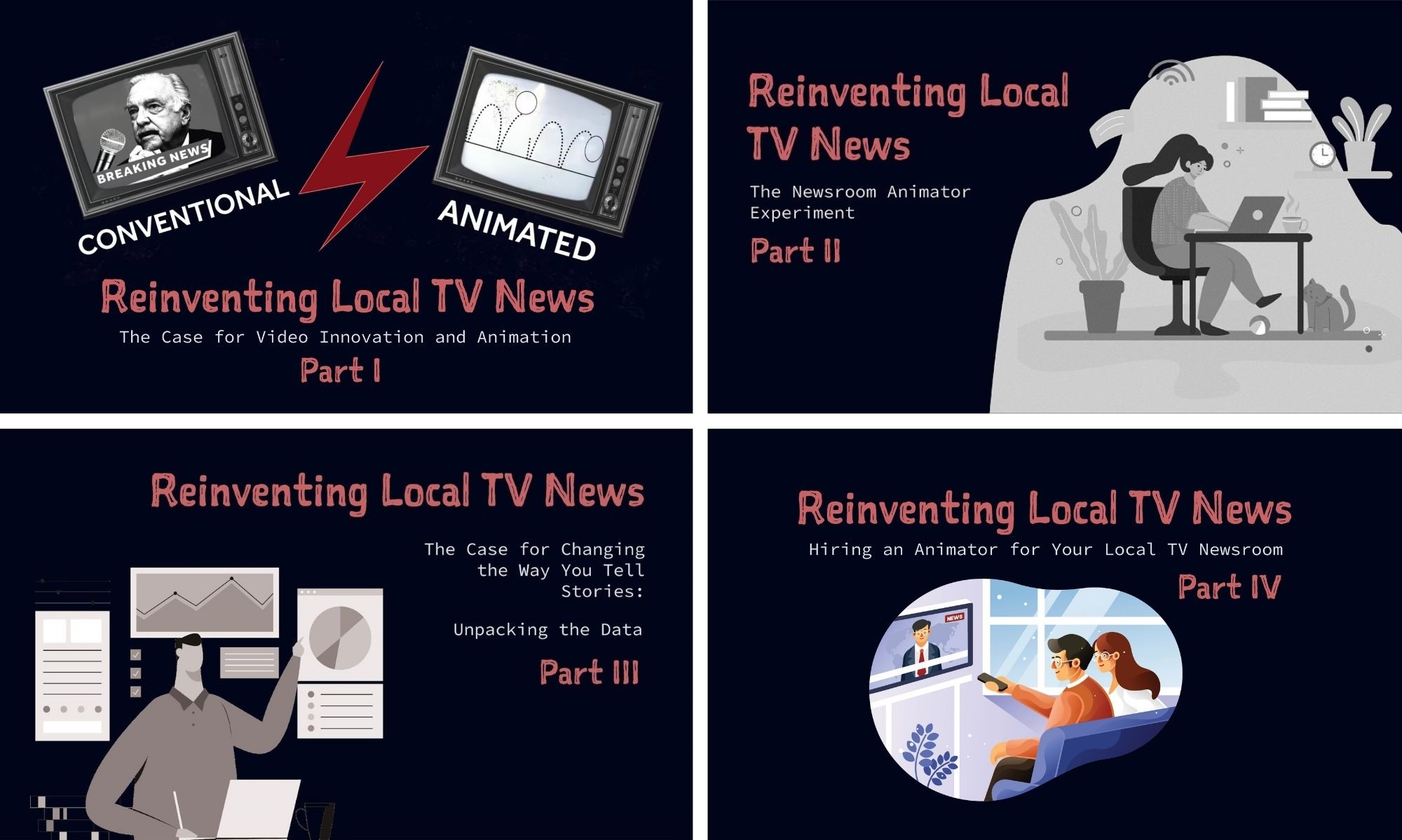We’re back! Reinventing Local TV News Project results published through RTDNA
Hello again, from the Reinventing Local TV News Project at Northeastern!
It’s been four years since we started researching the future of local television news. It’s been quite a journey as we’ve examined the types of stories TV stations cover, how they produce their content, and what they can do to innovate and appeal to a larger (and younger) audience both on-air and online.
We’re excited to announce that we’ve just published our latest findings through RTDNA, the Radio Television Digital News Association—the world’s largest professional organization devoted exclusively to broadcast and digital journalism.
Part 1, The Case for Video Innovation and Animation can be found here.
Part 2, The Newsroom Animator Experiment, can be found here.
Part 3, The Case for Changing the Way You Tell Stories, can be found here.
Part 4, Hiring an Animator for Your Local TV Newsroom, can be found here.
Here’s a video summary of our 2021 research findings:
A little history for those who are new to our work: In 2017, with the generous support of the Stanton Foundation, we launched our project. We observed and analyzed the visual practices of local news stations and then partnered with six television stations from around the country and asked them to send us some of their best stories. We then tried to improve upon the storytelling by adding in everything from historical footage and additional context, to sound elements and animation. Using audience research firm SmithGeiger, we tested the original and “remixed” versions of the stories and discovered that in hard news stories, people found the “remixed” stories largely more appealing and refreshing.
Here’s a video summary of our 2019 research findings:
In the next phase of our research, we focused on animation and partnered with WLS-TV in Chicago and WCVB-TV in Boston, placing animators in their newsrooms for one-year fellowships. We observed in real-time how animation impacted the typical news consumer and whether this position could be a realistic addition to the average newsroom. The results have revealed that the animated stories were more favorable, more appealing to younger demographics, and more easily understood, plus a lot more. Additionally, we found that although newsroom animators can expect a demanding workload as they keep up with the news cycle, the content produced is often more than worth the effort.
Meet the animators who worked as Visual Content Producers in Chicago and Boston:
Keep an eye on this page and subscribe to our newsletter! In the forthcoming months, we plan to publish new content about animation, modern visual storytelling, and more about the future of journalism.
Questions or thoughts about the project and the results? Reach out to us! Contact Mike Beaudet, project lead, at m.beaudet@northeastern.edu
- How animated data visualizations helped the Economic Innovation Group explain the impact of skilled immigration - November 1, 2023
- The Reinventing Local TV News Project is hiring researchers - July 10, 2023
- We’re back! Reinventing Local TV News Project results published through RTDNA - June 24, 2021





